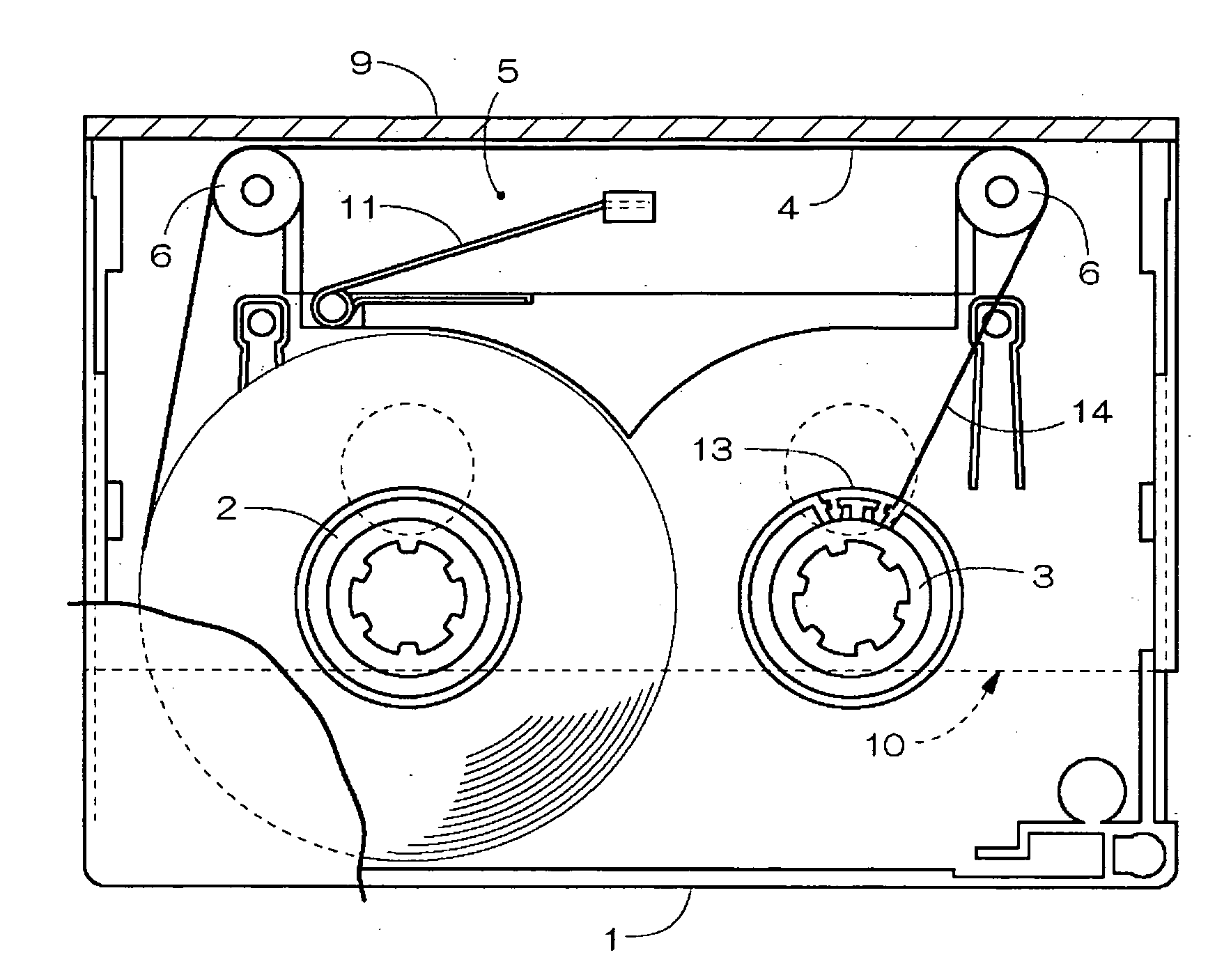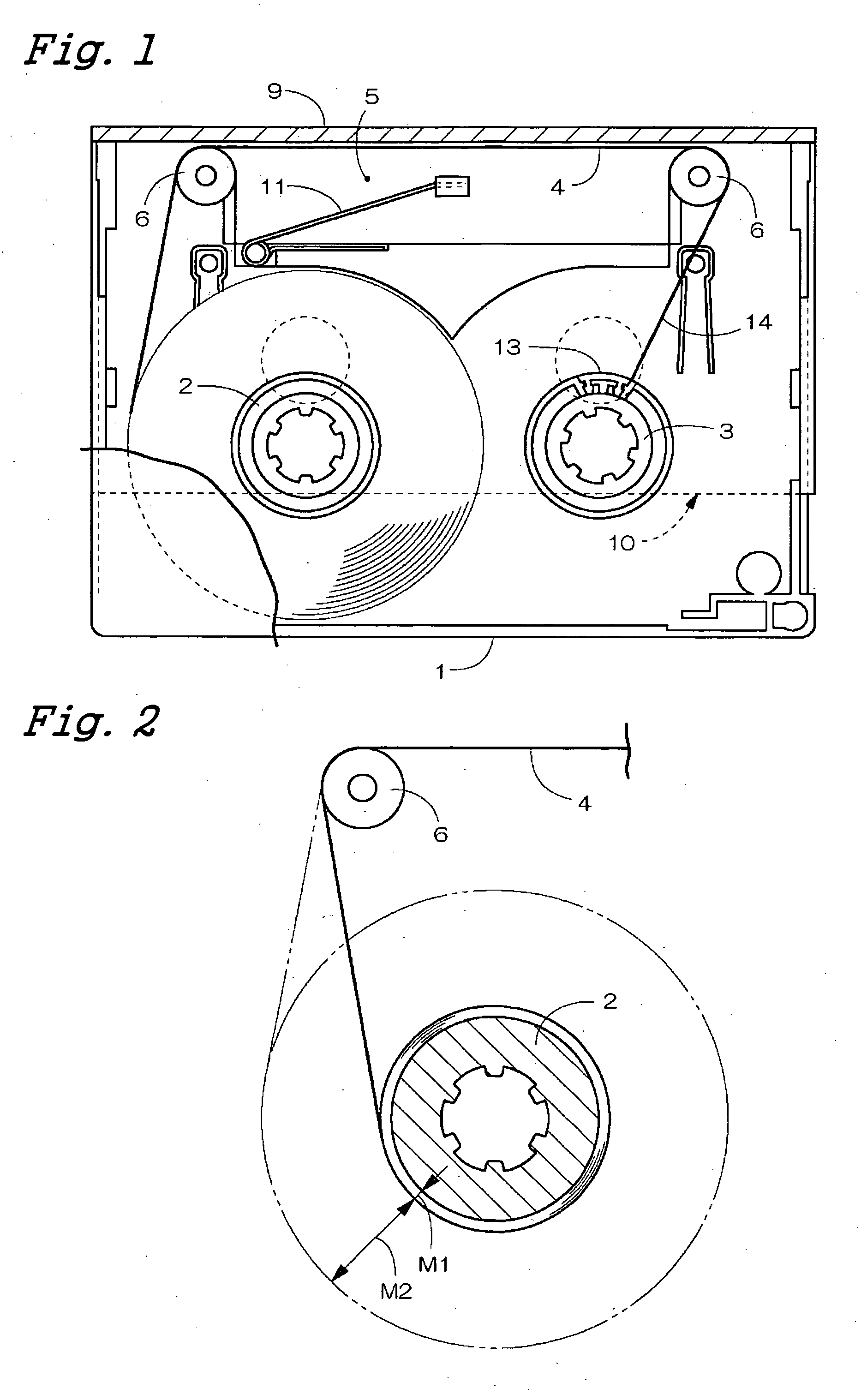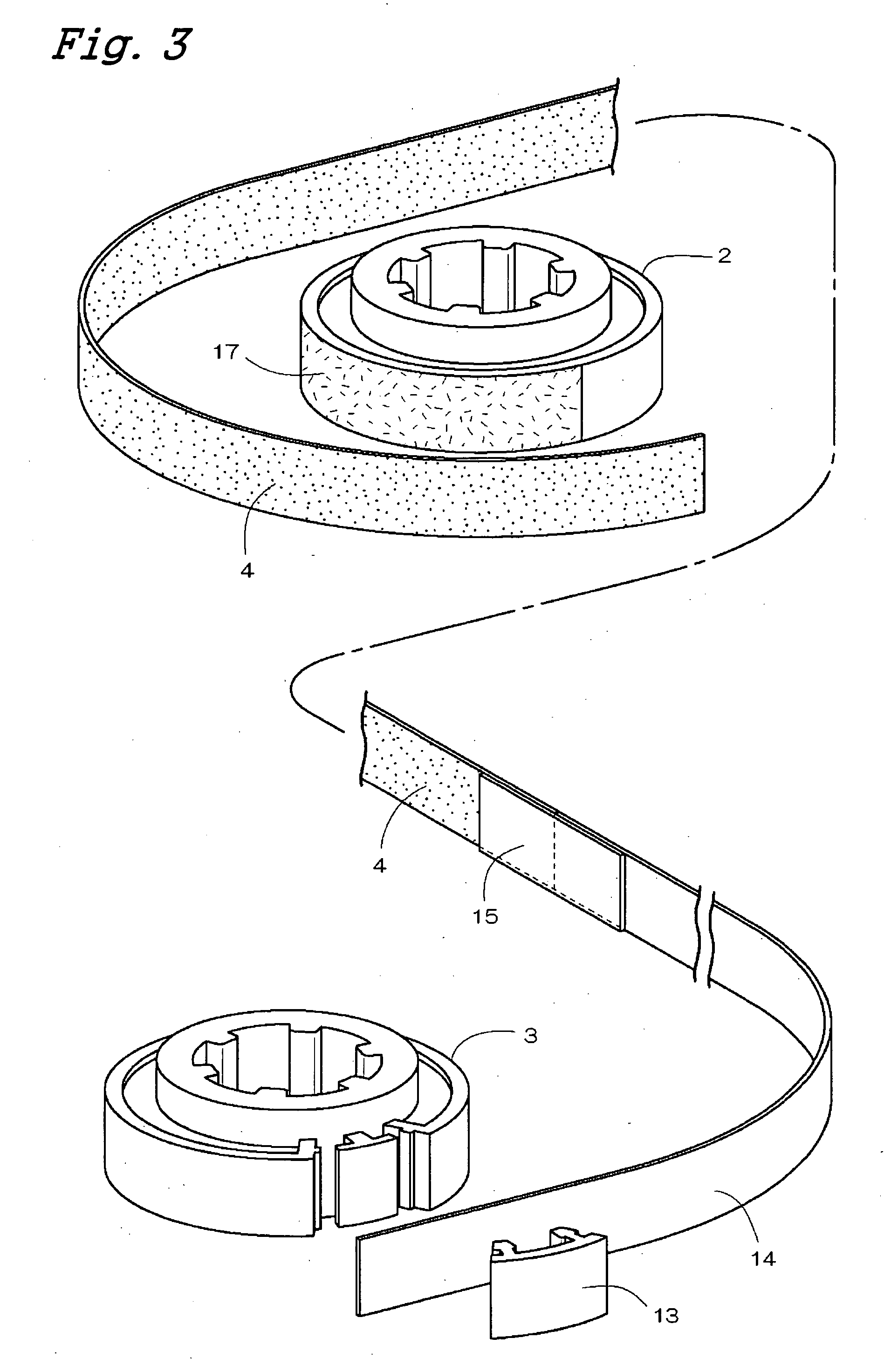Tape cartridge
a tape cartridge and tape technology, applied in the field of tape cartridges, can solve the problems of inability to prevent the transfer of shapes, dropout, and durability in long-term use, and achieve the effect of reducing the step size, reliable rewinding of magnetic tapes 4, and simplifying the winding operation of magnetic tapes
- Summary
- Abstract
- Description
- Claims
- Application Information
AI Technical Summary
Benefits of technology
Problems solved by technology
Method used
Image
Examples
Embodiment Construction
[0018]FIGS. 1-3 show the embodiment of a tape cartridge according to the present invention. In FIG. 1, the tape cartridge is composed of a tape supply-side hub 2 and a tape take-up-side hub 3 disposed on the left-hand and right-hand portions inside a mainframe case 1, and is capable of recording information signals by feeding the magnetic tape 4 wound onto the tape supply-side hub 2 to the tape take-up-side hub 3. A tape loading pocket 5 is provided on the front portion of the mainframe case 1. The magnetic tape 4 fed from the tape supply-side hub 2 is fed to the tape take-up-side hub 3 via tape guides 6, 6 disposed on both the sides of the pocket 5.
[0019] The tape loading pocket 5 can be opened and closed by rocking a front cover 9 and can also be opened and closed by sliding a shutter 10 disposed on the lower face side of the mainframe case 1. Reference numeral 11 denotes a spring for closing the shutter 10 by automatically applying a biased sliding force. The front cover 9 and t...
PUM
| Property | Measurement | Unit |
|---|---|---|
| magnetic | aaaaa | aaaaa |
| friction resistance | aaaaa | aaaaa |
| thickness | aaaaa | aaaaa |
Abstract
Description
Claims
Application Information
 Login to View More
Login to View More - R&D
- Intellectual Property
- Life Sciences
- Materials
- Tech Scout
- Unparalleled Data Quality
- Higher Quality Content
- 60% Fewer Hallucinations
Browse by: Latest US Patents, China's latest patents, Technical Efficacy Thesaurus, Application Domain, Technology Topic, Popular Technical Reports.
© 2025 PatSnap. All rights reserved.Legal|Privacy policy|Modern Slavery Act Transparency Statement|Sitemap|About US| Contact US: help@patsnap.com



